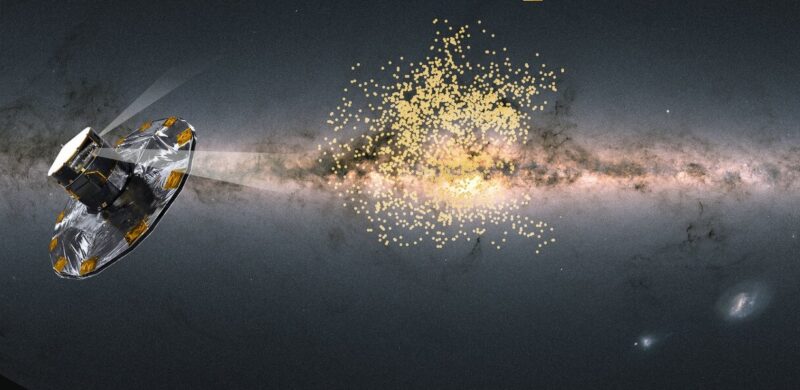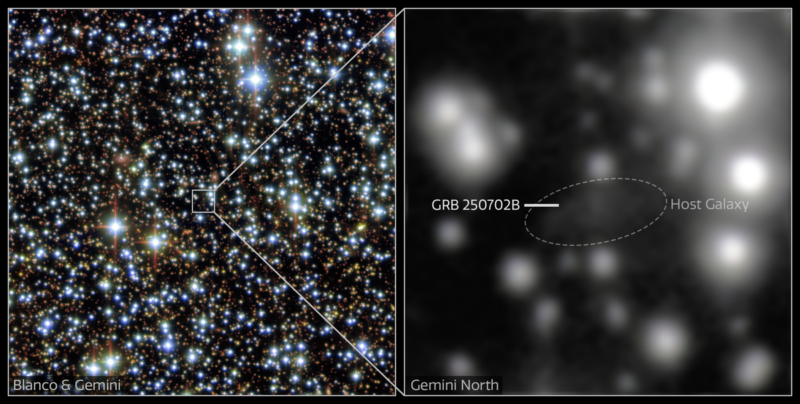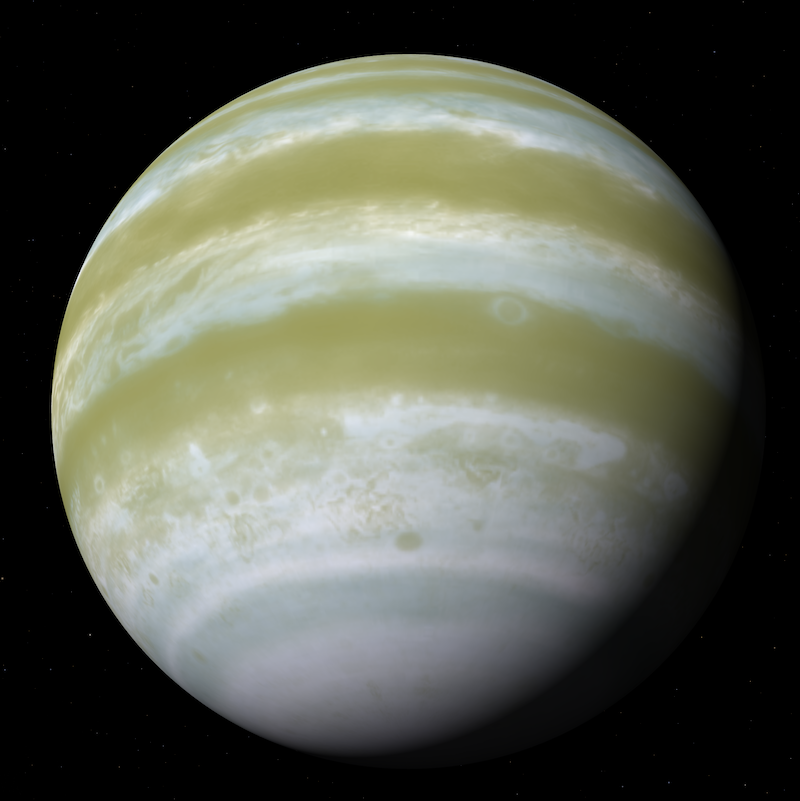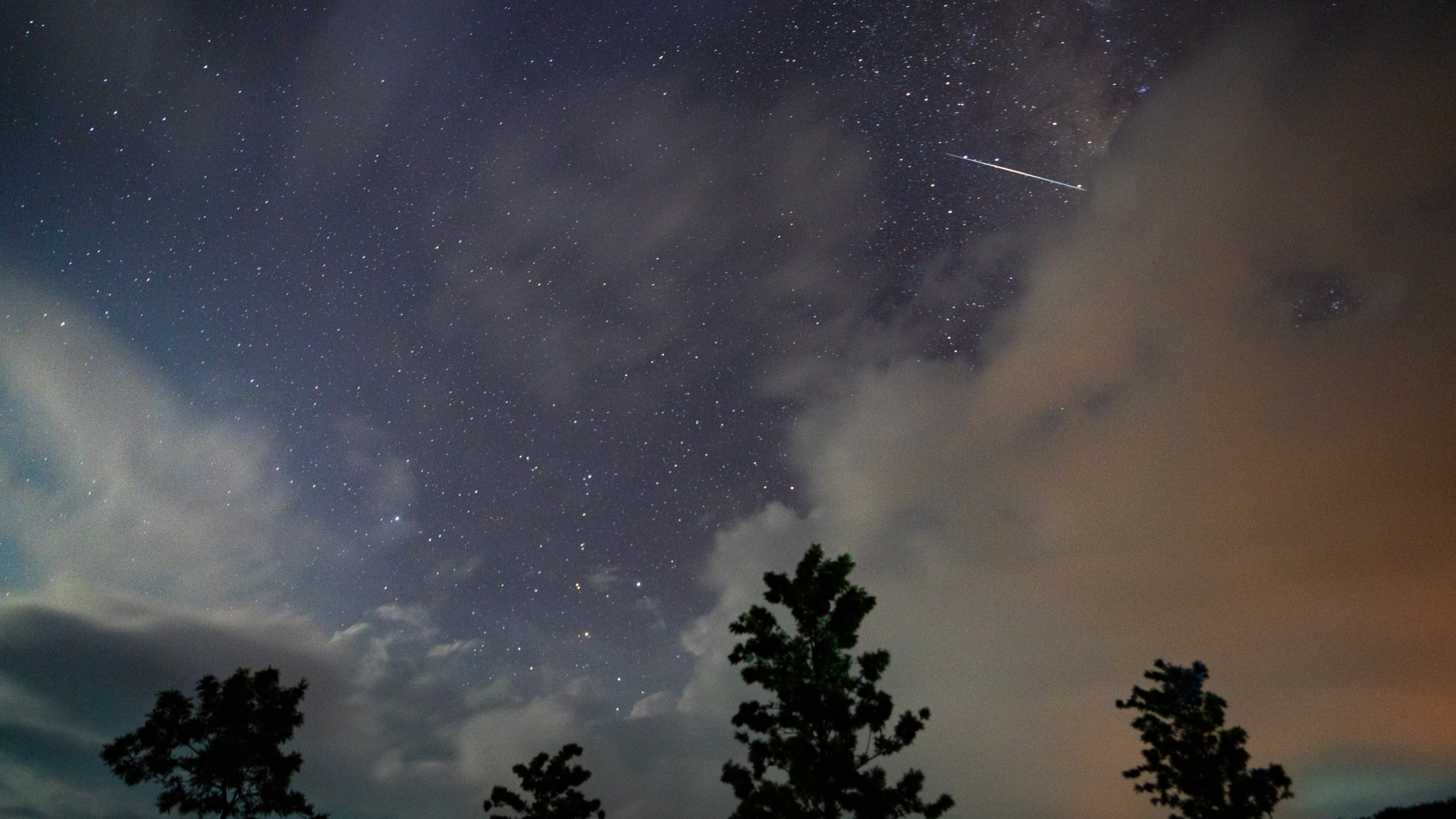Now Reading: Family of stars set to leave home and zip across the galaxy
-
01
Family of stars set to leave home and zip across the galaxy
Family of stars set to leave home and zip across the galaxy


Science matters. Wonder matters. You matter. Join our 2025 Donation Campaign today.
- The Gaia mission has spotted an unusual family of stars all strangely eager to leave home.
- The family of more than 1,000 young stars – named Ophion – is set to rush out across the galaxy in a totally haphazard, uncoordinated way.
- These stars are moving much more quickly than other families of stars that astronomers have observed. In fact, it’s like no other family we’ve seen before.
ESA published this original story on April 29, 2025. Edits by EarthSky.
Odd family of stars desperate to leave home
Stars in the Milky Way tend to form in families, with similar stars springing to life in roughly the same place at roughly the same time. These stars later head out into the wider galaxy when they’re ready to fly the nest. While smaller groups can completely dissipate, siblings from sizeable families usually move similarly and largely travel together.
We have seen many star families with Gaia. We’ve spotted strings of stars stretching out across the Milky Way and remaining intact for billions of years. We’ve mapped the ancient star streams that wound together to form the earliest structure of our galaxy. And we’ve put together a stellar family portrait of our cosmic home. By studying star families we can piece together not only the characteristics and behavior of the stars themselves but also learn about how our galaxy is evolving as a whole.
A family like no other
Using Gaia data, scientists have now spotted a star family unlike any other. It’s a massive family of more than 1,000 young stars behaving oddly. Despite its size, the family – dubbed Ophion – will soon have completely dispersed in record time, leaving just an empty nest behind.
Dylan Huson of Western Washington University is the lead author of the new peer-reviewed paper. The Astrophysical Journal published the study on April 25, 2025. Huson said:
Ophion is filled with stars that are set to rush out across the galaxy in a totally haphazard, uncoordinated way, which is far from what we’d expect for a family so big. What’s more, this will happen in a fraction of the time it’d usually take for such a large family to scatter. It’s like no other star family we’ve seen before.

A new model found the family of stars
To find Ophion, Huson and colleagues developed a new model. It explores Gaia’s vast, unrivalled trove of spectroscopic data to learn more about young, low-mass stars lying reasonably near to the sun. They applied this model, named Gaia Net, to the hundreds of millions of stellar spectra released as part of Gaia’s data release 3. Then they narrowed their search to “young” stars of under 20 million years in age … and out jumped Ophion.
ESA Gaia project scientist Johannes Sahlmann said:
This is the first time that it’s been possible to use a model like this for young stars, due to the immense volume and high quality of spectroscopic observations needed to make it work. It’s still pretty new to be able to reliably measure the parameters of lots of young stars at once. This kind of bulk observing is one of Gaia’s truly unprecedented achievements.
Another is how the Gaia mission is creating opportunities for new collaborative and interdisciplinary science through its open data policy. Several members of the Ophion discovery team are undergraduate and postgraduate students in computer science, who used Gaia data to innovate and develop new methods that are now offering new insights into the stars of the Milky Way.
Solving the mystery
The question remains: Why is Ophion behaving so unusually?
The scientists discuss several options. The star family resides around 650 light-years away. It’s near some other massive gatherings of young stars. Energetic events within and interactions between these colossal neighbors may have influenced Ophion through the years.
There are also signs that stars have exploded here in the past. These supernova bursts could have swept material away from Ophion and caused its stars to move far more rapidly and erratically than before. Co-author Marina Kounkel of the University of North Florida said:
We don’t know exactly what happened to this star family to make it behave this way, as we haven’t found anything quite like it before. It’s a mystery.
Excitingly, it changes how we think about star groups, and how to find them. Previous methods identified families by clustering similarly moving stars together, but Ophion would have slipped through this net. Without the huge, high-quality datasets from Gaia, and the new models we can now use to dig into these, we may have been missing a big piece of the stellar puzzle.
Gaia is done but its data lives on
After more than a decade spent mapping our skies, Gaia stopped observing in March. This marks the end of the spacecraft’s operations. But it’s just the beginning of the science. Many more discoveries are anticipated in the coming years, along with Gaia’s biggest data releases yet. (Data Release 4 is planned toward the end of 2026, and the Gaia legacy data release is planned for publication not before the end of 2030).
Read more about saying farewell to Gaia.
Bottom line: The Gaia mission has spotted a family of stars that is getting to ready to leave home in record time and zip in all directions across the galaxy.
Source: Gaia Net: Toward Robust Spectroscopic Parameters of Stars of all Evolutionary Stages
The post Family of stars set to leave home and zip across the galaxy first appeared on EarthSky.
Stay Informed With the Latest & Most Important News
Previous Post
Next Post
-
 012024 in Review: Highlights from NASA in Silicon Valley
012024 in Review: Highlights from NASA in Silicon Valley -
 02Panasonic Leica Summilux DG 15mm f/1.7 ASPH review
02Panasonic Leica Summilux DG 15mm f/1.7 ASPH review -
 03From Polymerization-Enabled Folding and Assembly to Chemical Evolution: Key Processes for Emergence of Functional Polymers in the Origin of Life
03From Polymerization-Enabled Folding and Assembly to Chemical Evolution: Key Processes for Emergence of Functional Polymers in the Origin of Life -
 04How New NASA, India Earth Satellite NISAR Will See Earth
04How New NASA, India Earth Satellite NISAR Will See Earth -
 05And Thus Begins A New Year For Life On Earth
05And Thus Begins A New Year For Life On Earth -
 06Astronomy Activation Ambassadors: A New Era
06Astronomy Activation Ambassadors: A New Era -
07SpaceX launch surge helps set new global launch record in 2024




















